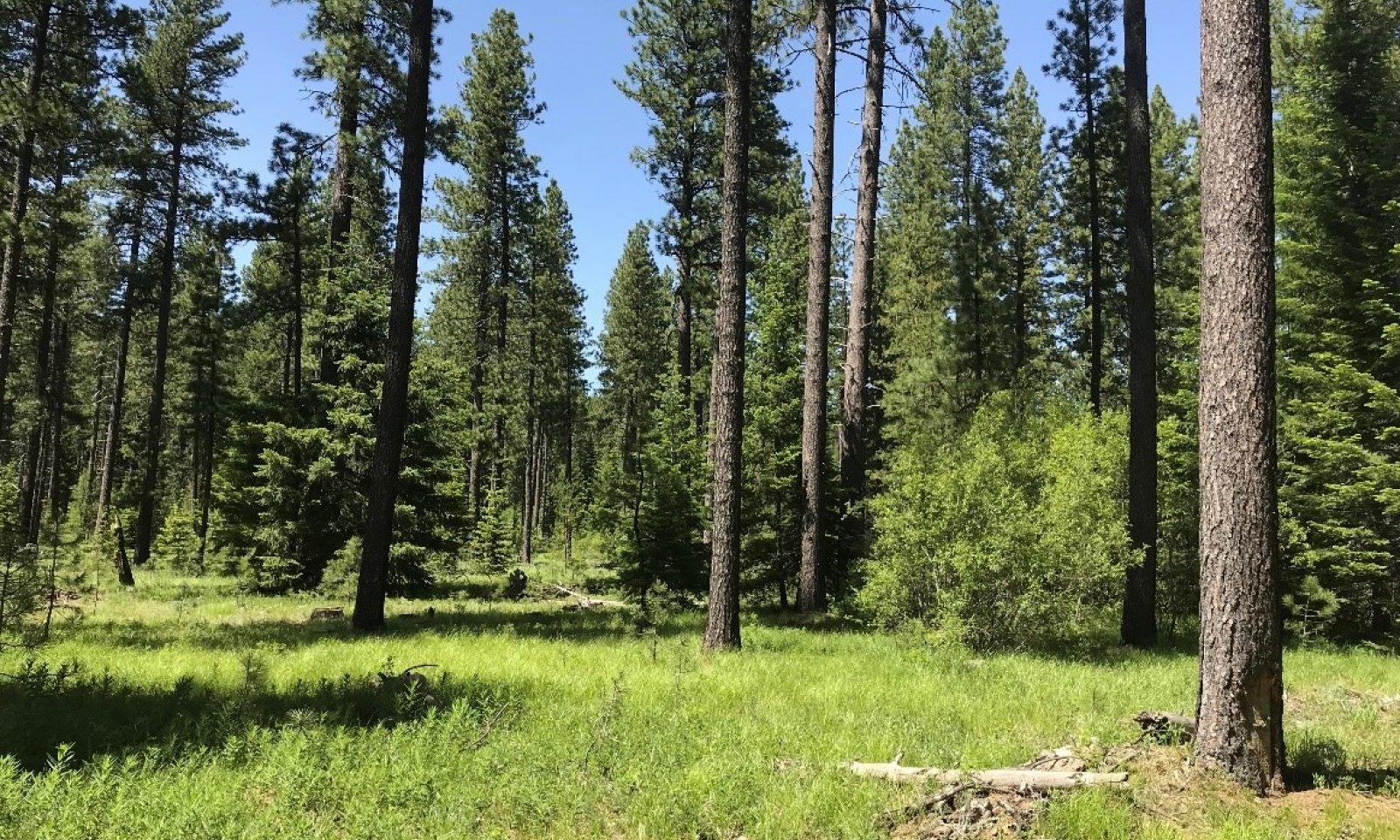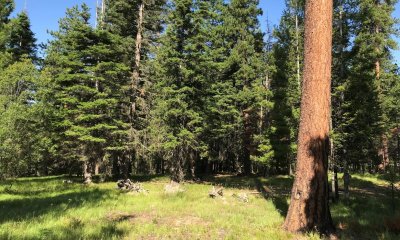
Cool Frigid Xeric Ashy Slopes (Grand fir Cool Dry Grass)
Scenario model
Current ecosystem state
Select a state
Management practices/drivers
Select a transition or restoration pathway
-
Transition T1A
Prolonged fire exclusion
More details -
Restoration pathway R2A
Selective removal and prescribed fire
More details -
No transition or restoration pathway between the selected states has been described
Target ecosystem state
Select a state
State 1
Reference



Description
Mature open stands of ponderosa pine and Douglas-fir with swards of pinegrass with elk sedge were common before increased fire protection. Frequent low intensity ground fires kept tree regeneration scattered and increased pine grass and elk sedge cover. With longer intervals between fires grand fir and Douglas-fir regeneration will become more prevalent in the overstory and shrubs will increase. Grand fir will develop into a second canopy level creating ladder fuels leading to a potential stand replacing fire. Ponderosa pine will be the major tree regenerating after severe fires with Douglas-fir and some grand fir filling in later.
Western larch can be present in some of the mature stands in the elk sedge sites and snowberry sites. Lodgepole pine can sometimes be found in pockets. Dwarf mistletoe can present on Douglas-fir and some root and bole rots can found on all the tree species, but not extreme.
Major insects that can cause mortality are the fir engraver and western spruce budworm The Douglas-fir tussock moth can also cause concern. Overstocked late seral stands with increased grand fir developing from prolonged fire intervals enhance beetle, budworm and tussock moth attack. The western pine beetle and the mountain pine beetle can cause mortality in ponderosa pine. Dwarf mistletoe is a major concern in western larch causing major growth loss and mortality. It will also be found on Douglas-fir, ponderosa pine, and lodgepole pine. Dwarf mistletoe was found in over 40 percent of the acreages in the Eastern Cascades where Douglas fir was a major stand component. Again, dense stands underneath infected trees from prolonged fire intervals causes mistletoe to spread easier. Fuel loads and ladder fuels increase fire intensity as a result.
Other diseases include Annosum, laminated, and Armillaria root rots. Armillaria can be present in close to 80 percent of the sites with grand fir. Indian paint fungus can be found on sites with increased grand fir stocking. These root rot diseases are enhanced through soil compaction and root damage though selective logging and road building. The root rot diseases are less of a concern in productive grand fir sites and worse in drier sites.
Submodel
Mechanism
Prolonged fire exclusion allows the grand fir regeneration to grow into a second level canopy layer creating ladder fuels for a potential stand replacing fire.
Model keys
Briefcase
Add ecological sites and Major Land Resource Areas to your briefcase by clicking on the briefcase (![]() ) icon wherever it occurs. Drag and drop items to reorder. Cookies are used to store briefcase items between browsing sessions. Because of this, the number of items that can be added to your briefcase is limited, and briefcase items added on one device and browser cannot be accessed from another device or browser. Users who do not wish to place cookies on their devices should not use the briefcase tool. Briefcase cookies serve no other purpose than described here and are deleted whenever browsing history is cleared.
) icon wherever it occurs. Drag and drop items to reorder. Cookies are used to store briefcase items between browsing sessions. Because of this, the number of items that can be added to your briefcase is limited, and briefcase items added on one device and browser cannot be accessed from another device or browser. Users who do not wish to place cookies on their devices should not use the briefcase tool. Briefcase cookies serve no other purpose than described here and are deleted whenever browsing history is cleared.
Ecological sites
Major Land Resource Areas
The Ecosystem Dynamics Interpretive Tool is an information system framework developed by the USDA-ARS Jornada Experimental Range, USDA Natural Resources Conservation Service, and New Mexico State University.




